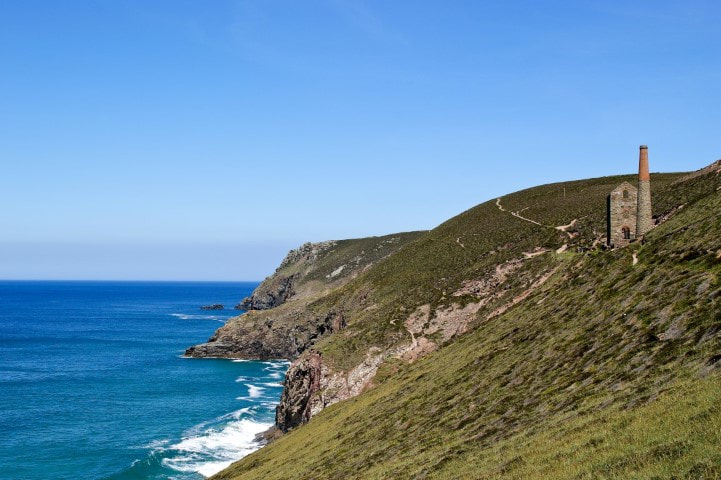This week is National Park week, so we’re sharing with you just one of the countless wonderful walks that await you on Dartmoor. Set on the very edge of the moor, not far from Tavistock, it is small wonder that many visitors drive past Foggintor without ever knowing of its existence. In this post, we offer a little bit of its history along with some great walking routes for all abilities.

Foggintor was once a Dartmoor tor like many others. However, in the late 1700s work began here to quarry granite for use in construction. Horses dragged trucks carrying the rock along tramways which are still visible. As work expanded, a railway was built to convey the rock to Plymouth. Explosives were used to blast huge slabs of granite from the cliff-face, sometimes weighing over 1,000 tonnes.
The granite was known for its quality. In the early days, it was used to build the foreboding Dartmoor Prison, just the other side of North Hessary tor to the east. As its reputation grew, it was then used for such iconic landmarks as Nelson’s Column in Trafalgar Square, and even the old London bridge. Surplus corbels (granite support beams) for the bridge, can still be found at the site today. All manner of features, from columns to plinths, were hewn out of Foggintor rock.
By the 1840s, 300 men were employed here – from quarrymen to blacksmiths. Its peak operation was in the Victorian era, as work expanded to include the nearby Swelltor quarry. Work continued until around 1906 before the quarries closed for good. Since then, nature has reclaimed the site, and the deep quarry is now a pool.
Visiting Foggintor is a joy. On summer days, it is a pleasant walk with beautiful views, and a very enticing pool that attracts wild-swimmers from the area. On other days, the place feels mysterious and bleak, shrouded in the titular fog, with the ghosts of ancient history whistling like the Dartmoor wind.
Not only is the quarry pool a rather surprising and beautiful spot, sheltered on all sides by granite cliffs, but the industrial heritage of bygone times can be found all around. The ruined buildings of the quartermaster’s house can be explored, and vast tips of hunks of granite tumble over the Dartmoor landscape. The old railway track can be followed as it sweeps around Kings Tor, past the old Swelltor Quarry and back towards Plymouth.
Many of the views from this area don’t feel particularly like moorland, as Kings Tor looks out onto the undulating Devon farmland over Tavistock, but they are nevertheless impressive.
Head back into Tavistock for a cup of tea and piece of cake, or head onwards to Princetown and visit the fascinating museum.
The easiest walk involves parking at the Pumping house (on the road between Merrivale and Ruddlestone), and walking down the farm track for about 1.5 miles. The quarry, tips and ruined buildings can be found either side of the path. To be more adventurous, continue onwards until you reach the railway track, and follow them around the ‘headland’ of Kings Tor and back round past Swell Tor. For an even more ambitious walk, you can actually start in Princetown, and walk a circular route that sees all the above.
As a word of warning, one must always take care while walking on Dartmoor and here is definitely no exception. If you’re coming from Princetown towards the top of the quarry, the cliff-edges are abrupt and very tall – stay away from the edge. Also, do not be tempted to cut across unknown moorland away from the path. You may have your end-goal in sight, but the boggy terrain can make it much more difficult, if not impossible, when compared to staying on the path.
The most basic walk needs no map, as you park at the Pumping Station, and walk south down the farm track until you find the quarry on your left.
For more elaborate walks, here are a couple of detailed routes.
Circular Walk from the Pumping House, 4 miles
Full walk from Princetown, 5 miles


